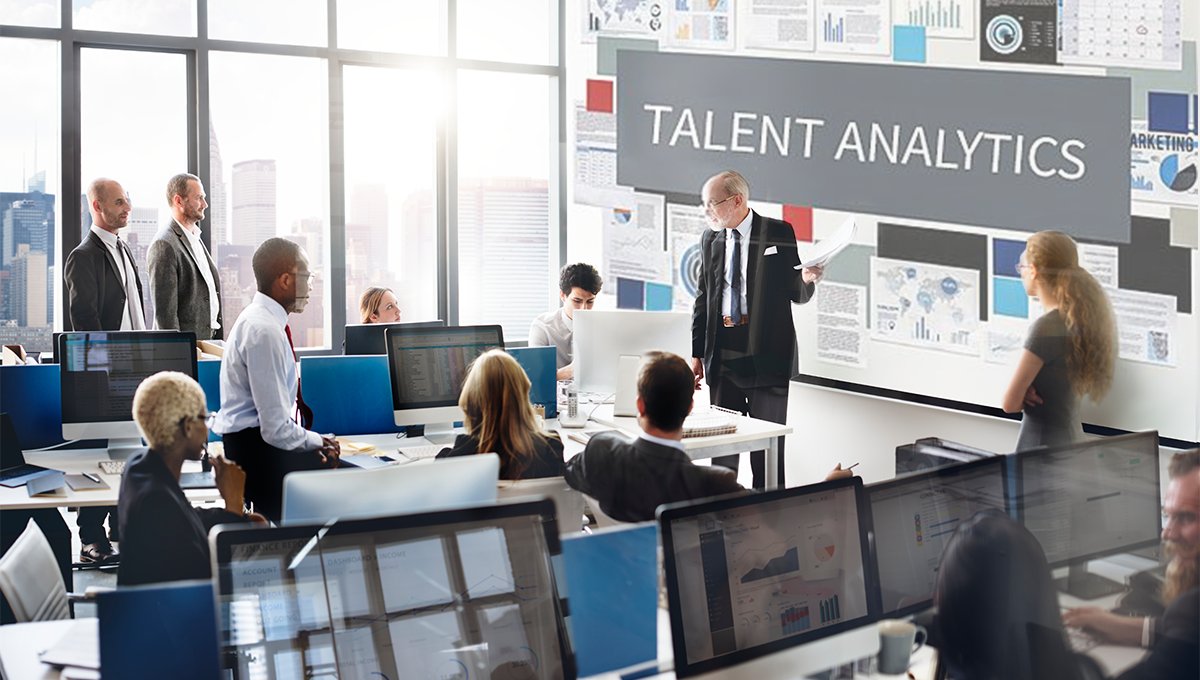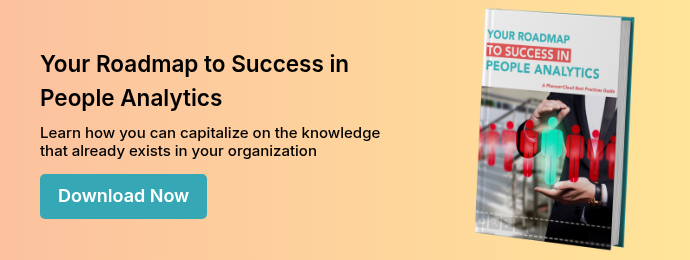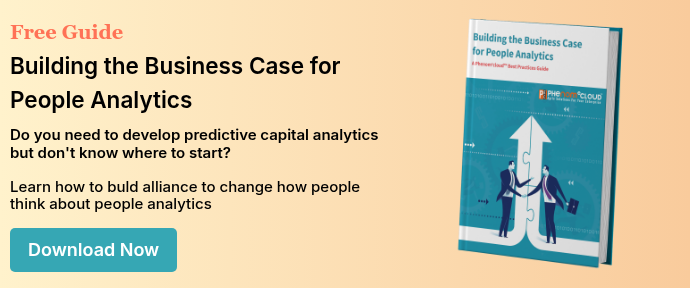- most business users and analysts will have self-service tools for data preparation,
- stand-alone self-service data preparation will expand into full analytical platforms or be integrated into existing platforms, and
- smart, governed, Hadoop-based, search-based and visual-based data discovery will converge into self-service data preparation and natural language generation.[3]
Analytics in HR
To make sense of the way we use terms for analytics in HR, we reviewed the way vendors and practitioners use the terms and applied our experience and understanding to the differences among them. In many contexts, the differences do not matter, but when they do matter, a lack of understanding can lead a project team astray.
- Workforce Analytics focuses on workforce metrics and optimization, applying statistical models to
 worker-related data to optimize human resource management. (Techopedia). In a general sense, it relates to the size and shape of the workforce.
worker-related data to optimize human resource management. (Techopedia). In a general sense, it relates to the size and shape of the workforce. - People Analytics originated with the Google approach to making people management decisions (Sullivan). A radical departure from the subjective approach to managing people decisions, it infers application of the same rigor used in engineering decisions to people decisions.[4]
- Talent Analytics means anything from using data to manage the workforce to planning a single career, depending on the source. Bersin defines it as “the use of measurement and analysis techniques to understand, improve, and optimize the people side of business” and conflates it with big data and people analytics.[5] Merriam-Webster defines “talent” as the natural endowments of a person or a group of individuals. Those attributes are what drive the competitive advantage people bring to an organization.
- Human Resource Analytics is the application of analytics to HR processes to improve employee performance and return on investment (Techopedia). In its strictest sense, it focuses on how well the HR organization provides services, with the ultimate output being performance and productivity.
Use these suggestions as a starting point for creating the lexicon that works for you. Clarification of terms will help your planning and project teams form operational definitions that foster common understanding.
References:
1. Parenteau, Josh. " Critical Capabilities for Business Intelligence and Analytics Platforms." Gartner, Inc. March 10, 2016.
2. Reilly, Peter. "What do we mean by 'HR analytics'?" November 28, 2016.
3. Parenteau, Josh, et.al. "Magic Quadrant for Business Intelligence and Analytics Platforms." February 04, 2016.
4.Sullivan, John, Ph.D. "How Google Is Using People Analytics to Completely Reinvent HR." ERE Media. February 26, 2013.
5. "Talent Analytics (with maturity model and framework)." Bersin by Deloitte. Accessed January 03, 2017.
PhenomᵉCloud is a comprehensive technology solutions provider committed to empowering businesses to overcome challenges, enhance their workforce capabilities, and achieve superior outcomes.





Leave a Comment